General Academic Assembly 2018
The University for the Future
By Peter StoicheffI begin by acknowledging that we are on Treaty Six territory and the traditional homeland of the Metis. We pay our respects to the First Nations and Metis ancestors of this place and reaffirm our relationship with one another.
The theme of my GAA addresses over the last two years has been that universities are more important now than they have ever been, and that the University of Saskatchewan is more important now than it has ever been.
If that’s true, we are required to ask ourselves, how do we accept that responsibility? How do we respond to the increased need people have for universities and the U of S – either those people who attend here as students or those who are not students here but are influenced by all that we do? How are we able to contribute in the ways people need us to contribute, given the world we now inhabit?
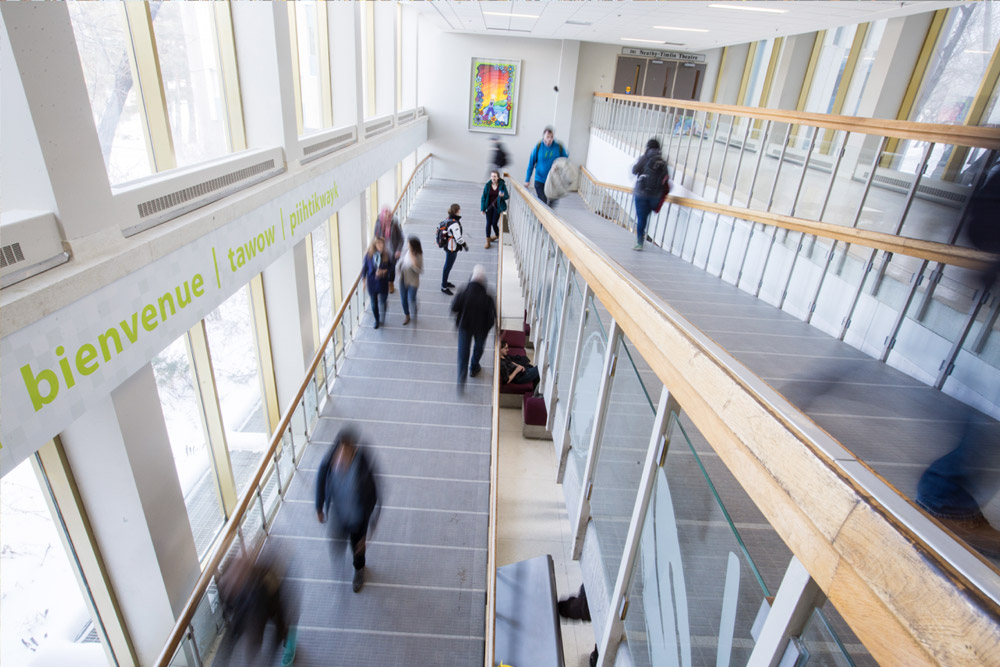
One answer, which I offered in my first GAA speech two years ago, is for us to identify the features shared by great universities, so that we can focus on them as we develop and evolve. I suggested that while those features are numerous, they can be collected as: connectivity, sustainability, diversity, and creativity. Those features are foundational to our Vision, Mission, and Values document which, in turn, has informed our proposed University Plan.
I believe we got the Vision right: “We will contribute to a sustainable future by being among the best in the world in areas of special and emerging strengths, through outstanding research, scholarly, and artistic work that addresses the needs and aspirations of our region and the world, and through exceptional teaching and engagement.” Global excellence, our many forms of discovery, the importance of teaching, and the commitment to engaging with what the world needs are all there; and they are embraced by the imperative of contributing to a sustainable future and the many forms that contribution can take. It follows, then, that our proposed University Plan begins with the statement that “we will be the university the world needs.”
The proposed Plan essentially responds to that question “how are we able to contribute in the ways people need us to contribute, given the world we now inhabit?” How are we going to govern ourselves not only on the basis of what we want to be, but what the world needs us to be? How are we, put another way, going to design ourselves to be the university for the future? And not just any university for the future, but the university that, with our unique strengths, we can be for the future.
Too, how are we going to do so in financially challenging circumstances -- for us and for the province -- during which many of us have foregone attractive opportunities for change due to lack of sufficient resources to carry them out? During which time the university has had to reduce its workforce numbers, and costs, through voluntary exit programs; to suspend academic programs; to reduce budgets in all units across campus; and to search for aggressive cost-cutting strategies everywhere? Base grant funding -- the amount used to operate the university -- is less now than it was in 2012/13, and has been reduced by $91M since 2014-15. Last year’s PST budget decision, increases in utility costs above the general rate of inflation each year (even as we achieve results in reducing the overall usage), mid-year clawbacks and uncertainty over College of Medicine funding, continue to emphasize the need for us to plan, and plan well, by focusing on our mission, and by enhancing revenues such as increasing enrolment in areas of student demand, reducing expenses, guaranteeing financial sustainability, and ensuring exceptional quality in all we do.
Those are important, and weighty, issues. And I believe that, just as with the Vision document, we have succeeded in addressing them in our proposed University Plan that has been approved by Council and goes to Senate in two weeks and to the Board of Governors in June. Time will tell, and history will judge, but I believe the Plan’s integrity is in the fact that it has looked those questions in the eye. It identifies what this university needs to concentrate on doing to be the university for the future.
So I’d like to speak about the tremendous successes we’ve all had this past year, how they predict we will fulfill the bold goals of our proposed Plan, remind us of why it’s important to have a bold Plan at a time of on-going financial constraints, and why it’s important to design ourselves to be an outward-looking university for the future.
So how can we be the university for the future? I’ve argued before that many rankings mechanisms, not proficient at asking this question, are even less proficient at answering it, and therefore evaluate universities along less consequential lines, and along the same lines year after year, even though so much has changed. Our proposed Plan, I argue, has not made the same mistake.
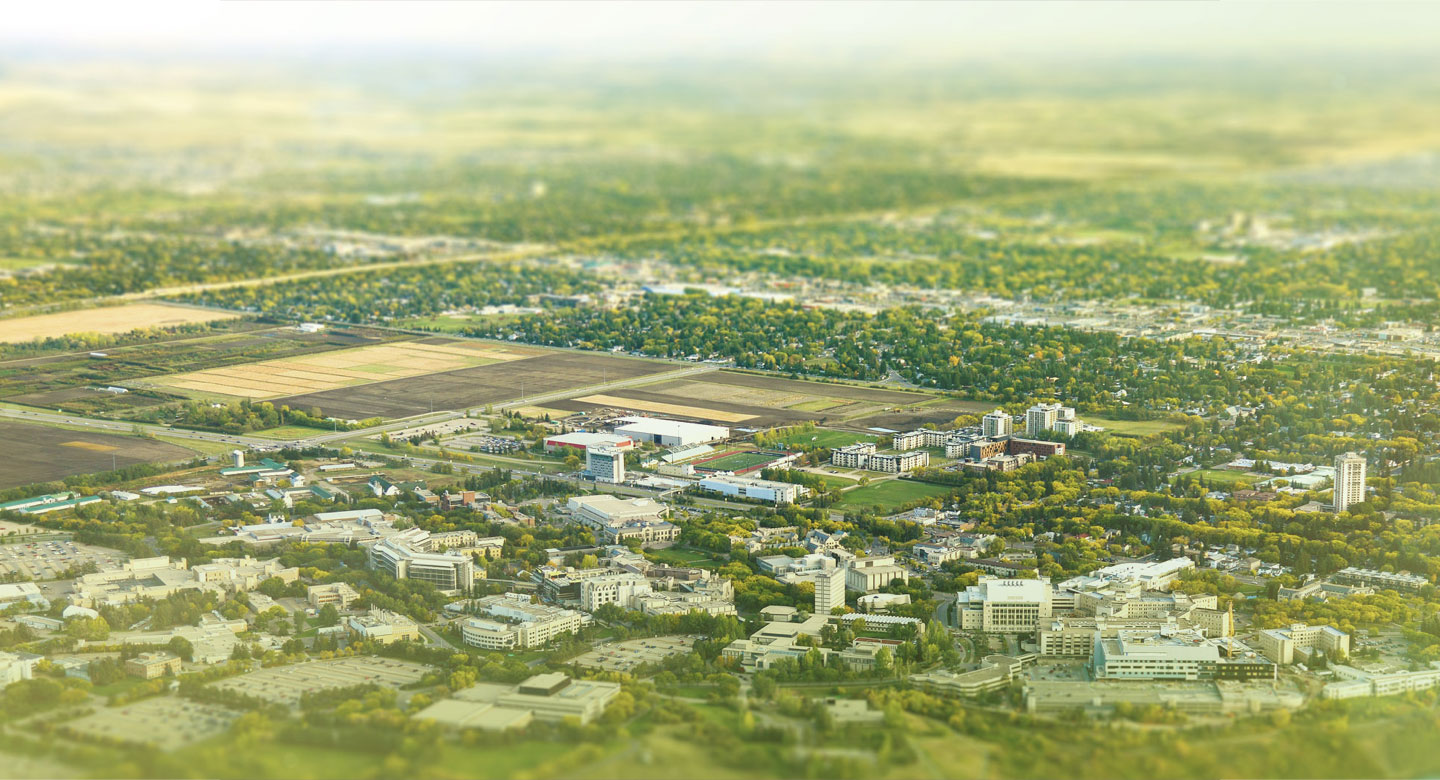
One way to be a university for the future is to engage with, and to be seen to be engaging with, what the world needs us to be. That is our value proposition, to deliberately “confront humanity’s greatest challenges and opportunities” – part of the “Courageous Curiosity” that is the first commitment of our proposed Plan. Our way to be the university for the future is to identify which of those challenges, given our unique strengths, we should confront, and then confront them. The confidence that runs through the plan is due to the fact that we’re no longer only a university of “promise and potential”, but a university that is now realizing that potential. What is the recent evidence for that confidence?
There is much.
In health, we’re building on our pioneering nuclear imaging work through a new method for producing medical isotopes at the CLS without using a nuclear reactor or creating radioactive waste -- of enormous significance given the closure of Chalk River just last week.
And using our state-of-the-art cyclotron, we’re producing medical isotopes for the diagnosis and treatment of cancer – a fitting homage to the Cobalt 60 work done here decades ago. Since June of 2016, we’ve been supplying Royal University Hospital with all its medical isotopes instead of RUH having to bring them in from Hamilton, Ontario. As a result, over 2,000 patients have received PET/CT scans near their homes and families, instead of having to travel to health centres in other provinces.
We’re a national leader in community-engaged health research, particularly in using robotic technology— whimsically called “doctor in a box”—to deliver health care to people in the north so they don’t have to leave their homes. This also reduces costs for the provincial health system. And new remote tele-robotic health techniques such as long distance ultrasound imaging are changing how we diagnose and treat chronic diseases for people without access to larger medical centres.
If our community-engaged health research is at the vanguard of change – identifying community needs and helping solve them -- so is our crop development work. The U of S has become Canada’s leading hub for crop genomics. At our Global Institute for Food Security we are combining cutting-edge plant science with computational techniques to transform the breeding of crops, including wheat, canola, and lentils. We are succeeding at improving drought-, pest- and stress-resistance in crops, and our goal is to be a unique resource for plant breeders around the world by 2022.
These are examples of how we are already “confronting humanity’s greatest challenges and opportunities” as our Plan’s first commitment, “Courageous Curiosity” asks us to do.
In the process, we’ve become a talent magnet for the U of S, the City of Saskatoon, and our province. In the last two years we’ve attracted Yolande Seddon, recipient of a recently announced NSERC Industrial Research Chair in the Western College of Veterinary Medicine; Canada Excellence Research Chair Leon Kochian (from Cornell University) to help lead our efforts in food security research; Alexandra King (from Simon Fraser University) to be our first Cameco Chair in Indigenous Health; and Jay Famiglietti (from the Jet Propulsion Labs in Pasadena) as one of the new Canada 150 Research Chairs—twenty-four in total, just announced last week in Ottawa—to help lead our efforts in water security research.
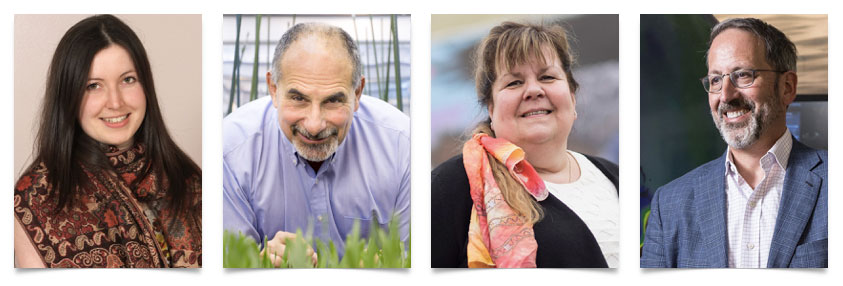
As a result of bringing such talent here, we are creating a culture of excellence (and diversity) that will increase our attractiveness to students and researchers and staff globally, enabling us to contribute further to the world’s greatest challenges in our unique way.
As an aside, attracting just one of these research talents here meant we climbed in the Shanghai ARWU (Academic Ranking of World Universities) by 100 places this past year.
Another feature of the “university for the future”? It’s our proposed Plan’s second commitment, “Boundless Collaboration”, that asks us to “invigorate the impact of collaboration in everything we do.” We have the confidence that this is possible at the U of S because our tendency is to be collaborative. We say as much in our Vision document: “we have a well-deserved reputation for creativity, collaboration, and achievement.” We now need to turn that reputation into further success, by “growing the number, diversity and scale of local, national and international partnerships in research, scholarship and training” as the proposed Plan’s second commitment states.
We’ve been doing this recently as well. In the past two years we’ve signed an MoU with the other 23 post-secondary institutions in the province to close the education gap with Indigenous people; an MoU with the FSIN; with the National Centre for Truth and Reconciliation; with artistic institutions the Remai Modern and the Saskatoon Symphony Orchestra and, most recently with the City of Saskatoon. Almost all of these are firsts-of-their-kind in the country. And we’ve signed many with institutions like ours around the world to solve challenges together and to share students so that they are prepared “for enriching careers and fulfilling lives as engaged global citizens.”
We are an integral part of the “Protein Industries Canada” supercluster announced in February. Over fifty proposals were submitted last summer, reduced to nine in the late fall, and then to five successful ones in February. Over 120 small- medium- and large businesses, several universities, NGOs and other institutions from the prairie provinces are involved. We are by far the most research-intensive of the universities, and by far the most experienced in the necessary agricultural, food security and public policy research this supercluster’s work depends upon.
These many partnerships are more than aspirational words – they are public acknowledgements of our proposed Plan’s second commitment “Boundless Collaboration” that we will keep, underscoring our mission to “build a rich cultural community”.
I’ve been focusing on our global and national impact in many of these examples. But I want to emphasize the importance of our partnership with the City of Saskatoon. Keep in mind that the U of S owns 18% of the land within a five-km radius of downtown, pays $7.5M in municipal taxes, is responsible for 40% of the bus users, is connected to many local charities, offers many sports programs for children, and offers health and legal services in the inner city. We have an enormous responsibility to Saskatoon, and we need to honour it.
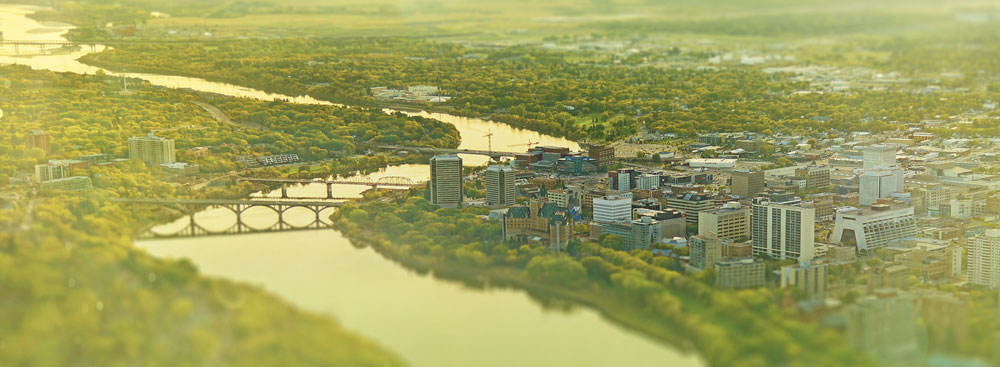
Great cities need, and deserve, great universities. A strategic relationship between the two is crucial. All the moreso because cities are becoming the sites of greatest influence in Canada, because the country’s population has recently become more urban than rural, and because innovation in sustainable energy, transportation, infrastructure, environment, housing, health (and more) is needed, and is happening, in cities.
That is yet another feature of the university for the future – one that is intentional about its city relationship. Hence our MoU with the City of Saskatoon focuses on where our strengths have relevance to the needs of the City so that together we can “serve and enhance the public good, and through innovative and collaborative solutions seek to address issues of mutual concern.”
Another feature of the university for the future is to “achieve meaningful change with and for our communities”, our proposed Plan’s third Commitment “Inspired Communities”. There are many ways we’re doing this. I’ll focus on just a few, but the list is longer than this.
Woven into the mission of the College of Dentistry is its commitment to provide dental care to neighborhoods and marginalized groups of Saskatoon. The college has various initiatives to meet these needs, including the Saskatoon West Dental clinic, the Syrian Refugee Initiative and the Pediatric Outreach program. The College is looking to establish eight new dental clinics serving priority populations. Six will serve Indigenous communities (two of which might begin this year), one will serve the elderly in long-term care, and one the developmentally disabled.
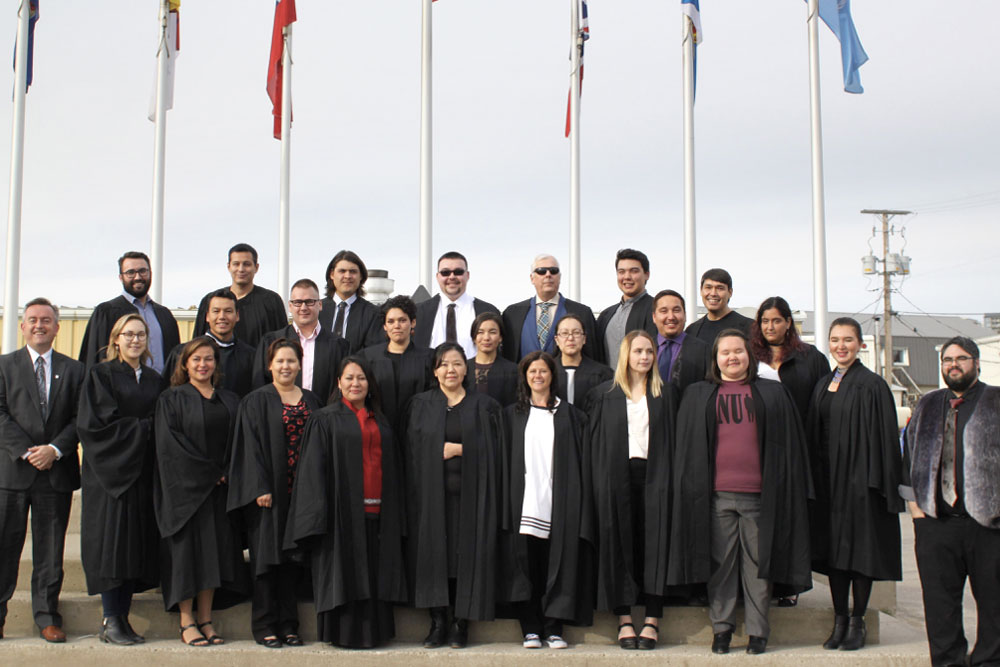
Our College of Law, in partnership with Nunavut Arctic College (NAC) and the Government of Nunavut, launched its Nunavut Law Program last fall. It aims to increase the number of practicing lawyers in Nunavut, produce graduates that can practice in various fields of law, and improve access to justice there. It will also deliver relevant educational programming to the Territory in line with the Government of Nunavut’s Siv–OO-moot AblOOk-ta mandate, which is to have “more well-educated and self-reliant [citizens], with a majority of youth graduating from high school, college or university with the same level of capability as graduates anywhere in Canada”.
Other examples of achieving meaningful change with and for our communities? The Social Sciences Research Laboratories in the College of Arts & Science completed a comprehensive research survey called “Taking the Pulse” – its third in the last fifteen years -- to document attitudes and opinions on important and controversial issues facing people across the province. A representative sample of 400 Saskatchewan residents answered questions about a variety of timely and hot-button topics in the province. An ongoing partnership with Postmedia allowed the Saskatoon StarPhoenix and Regina Leader-Post to use the new survey data in their Boxing Day editions and to present it in a way that matters to the Saskatchewan public.
This spring the University Art Galleries is launching a campus-wide Indigenous Artist-in-Residence program, with the support of the Humanities Research Unit and the offices of the Vice-Provost Teaching and Learning and the Vice-Provost Indigenous Engagement. The residency program will feature Indigenous artists exploring the principles of Truth and Reconciliation at the University with students, staff and faculty. The program is also the first step in an exciting partnership between the U of S and Wanuskewin Heritage Park.
Our goal of achieving meaningful change with and for our communities led to our acquisition of the Forest Building in Prince Albert across from its City Hall. It gives us the opportunity to bring together many programs we have been running there for years (but until now under difficult infrastructure conditions) for the benefit of that community.
The Prince Albert location also provides us with a gateway to the north, so that we can expand our course and program offerings to people who live too far from Saskatoon to enable them to otherwise attend university. Nursing, Arts & Science and Medicine are currently among these, but the list will grow because of the improved venue we have secured.

Half of the students currently enrolled in our programs in P.A. are Indigenous -- and the new building, increase in program offerings, and growth in student numbers will benefit Indigenous students and their communities.
This community engagement with Prince Albert is also part of a larger reality that our proposed Plan’s third commitment acknowledges. The C.D. Howe Institute’s latest report states that "labour market trends show a gradual shift to jobs that require higher skill levels” -- and that means, basically, that there will be a greater need for university training. Our communities include not only the city, Canada, and beyond, but the province itself.
And while Saskatchewan’s economy is becoming more knowledge intensive—with 44 per cent of the available jobs in the province requiring the skills and knowledge that a university education provides -- only 25 per cent of Saskatchewan’s workforce has a university education, underscoring the critical importance of investing in the higher education system, and the fact that we are a crucial part of the province’s future success.
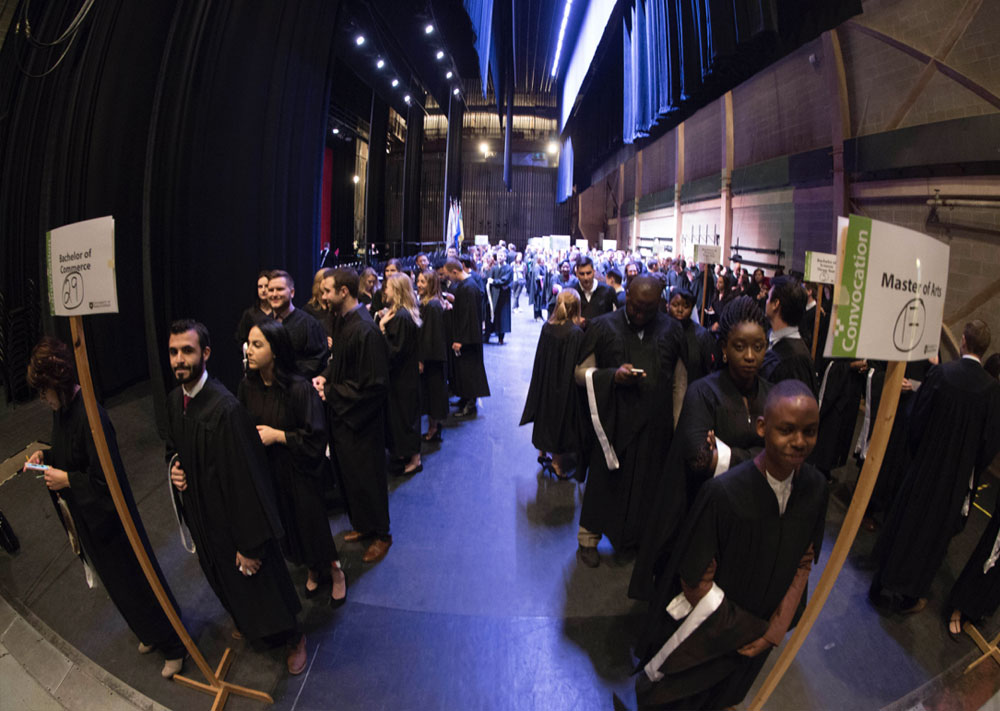
The good news is that at the U of S we are training greater numbers of students every year and we’re now up to almost 25,000 students from more than 100 countries. Being the university for the future isn’t defined just by student numbers but by student success, by training students to build that future, and supporting them for success in all that they go on to do.
Speaking of student success, the U of S was honoured to have four of its students receive prestigious 2017 Vanier scholarships. Valued at $50,000 per year for three years, Vanier scholarships recognize top-tier PhD students who demonstrate excellence in academia, research impact and leadership at Canadian universities. Three of these students are Indigenous.
In this “age of disruption” the pace of innovation today is very fast, with new technologies like artificial intelligence, next-generation genomics, and robotics, displacing established technologies and, in the process, changing the way we think, behave, do business, and learn. It was not predicted even ten years ago, for example, that Saskatoon would be home to a dynamic high-tech sector, so hot that we are now racing to even remotely keep pace with the large number of computer scientists this burgeoning sector needs. U of S graduates are driving this.
At Solido Design, for example, which designs software to create chips for modern electronics, 53 of their 63 employees—84 per cent—are U of S graduates. This past fall, in what has been reported as the largest technology acquisition in Saskatchewan’s history, Siemens acquired Solido as part of their strategic investment in virtual simulation and design. Their goal is to make Saskatoon an R&D centre for their digital factory division. Siemens cited the presence of our university and our proven ability to provide high-quality graduates as a key reason for the acquisition.
The jobs today’s students need to be prepared for will very likely grow out of innovative university research – both curiosity-driven and applied.
The U of S, one of Canada’s top 15 research universities, is a leader in helping Saskatchewan to stay ahead of the innovation curve. Without curiosity-driven research, there is no innovation [repeat] -- which is the principle behind the Fundamental Science Review report that positively influenced February’s Federal Budget 2018.
All this is why one of our guideposts for the Plan’s third commitment, “Inspired Communities”, is “amplified contribution to GDP, job creation, and economic security in Saskatchewan and across Canada.” With nearly 900 community partnerships in diverse fields in Canada and globally, we are succeeding in connecting the U of S and Saskatchewan with the world.
To increase student chances of success in the job market, we’re providing more research opportunities for undergraduate students, we’re increasing the numbers of graduate students (17% of our student population is at the graduate level, which puts us eighth highest in the country), and we’re creating more work placements for our students.
Countless business ideas have been generated on our campus in a diverse range of disciplines, and more than 70 businesses have now been established by members of the U of S community in the last few years.
In sum, we are working to address specific community challenges and to equip students with the skills and training they need for tomorrow’s jobs—through discoveries, through spinoffs, and through graduating truly innovative thinkers and problem-solvers.
These examples help demonstrate why the U of S leads Canada’s 96 universities when it comes to per capita economic impact on the surrounding region. And they show why we can say with confidence that our proposed Plan’s third commitment—“Inspired Communities”—will involve “distinguishing the university as an essential community partner by growing and documenting our impact on prosperity, quality of life … and student success.”
Being a university for the future means being the university the world needs. That is a gesture of respect for the communities we believe we can work with, the partnerships we can build, the challenges we can help meet. Foundational to the proposed Plan is the principle of Nee-Can-iTan Mana-sito-winik – “Let us lead with respect”.
In this country, no university is going to be “for the future” if it does not participate in ongoing efforts toward reconciliation. When we speak of the greatest challenges and opportunities that we are prepared to meet, making good on the TRC’s calls to action presents Canada with one of them.
It is an opportunity because with commitment and strong leadership Canada will emerge more unified, healthier and more inclusive than it has ever been. When the U of S held Canada’s first National Forum on Building Reconciliation two years ago (the fourth will be in Victoria in November), TRC chair Murray Sinclair said that “education is the key to reconciliation.” If so, a lot of work needs to be done.
About 27 per cent of Canadians have a university degree but fewer than 10 per cent of Indigenous people do. If access to a quality education is a sign of a just society, that’s injustice in action.
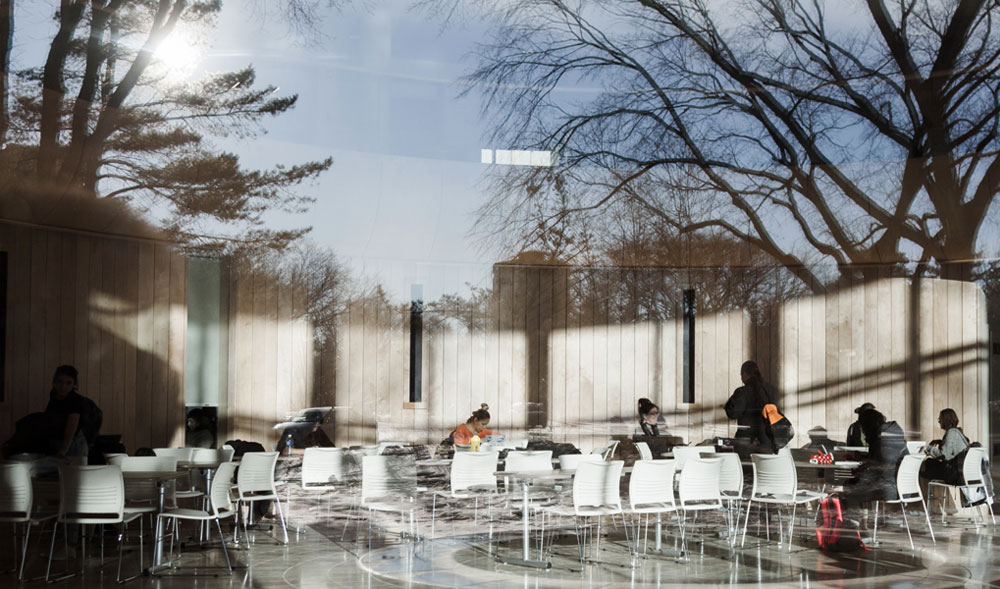
The U of S is committed to increasing the number of Indigenous students it registers, supports for success, and graduates. We are seeing improvement in this regard annually. We have reached an enrolment figure of 3,100 for self-declared Indigenous students, up 28% over the last five years – a period during which our overall student population grew, by comparison, 3% -- an encouraging figure in itself.
Our role in Canada’s journey to reconciliation involves more than increasing the graduation rates and numbers of Indigenous students, however. Our proposed Plan commits us to “growth in the number of Indigenous policies, programmes, curricula, and initiatives across colleges and schools developed with and validated by Indigenous peoples”. Not to supplant traditional western understanding, but to enrich it, acknowledge thousands of years of deep learning that occurred here long prior to it, and give all students a more informed and ultimately more compassionate understanding of the world.
It commits us to Indigenous leadership at all levels of the academy, administration, and governance. It commits us to changing our systems and structures—including tenure, promotion, and merit practices—to recognize Indigenization. It commits us to seeing strong evidence of initiatives that respond to the TRC Calls to Action.
Through these commitments to Nee-Can-iTan Mana-sito-winik—leading with respect—the U of S will be an even better university. A challenge of this magnitude means being purposeful and committed. It means not just reconciliation but reconciliaction. It will take time and a careful mix of patience and impatience. But I am reminded of Senator Sinclair’s statement that “If we agree on the objective of reconciliation, and agree to work together, the work we do today will immeasurably strengthen the social fabric of Canada tomorrow.”
That statement about “tomorrow” fits well with our commitment to being the university for the future. It will require us to stay focused on our Plan in the face of budgetary pressures – that is why the timing of our Vision document, and now our University Plan, is so good. And it will require us to acknowledge and broadcast, at the same time, all the positive change we are leading with respect, and the immense contributions we are making and have the capacity to make.
I want to thank everyone here, and the U of S community at large, for an outstanding academic year in the face of financial adversity—a year during which, again, excellence was achieved and our value to the city, province and beyond was demonstrated.

